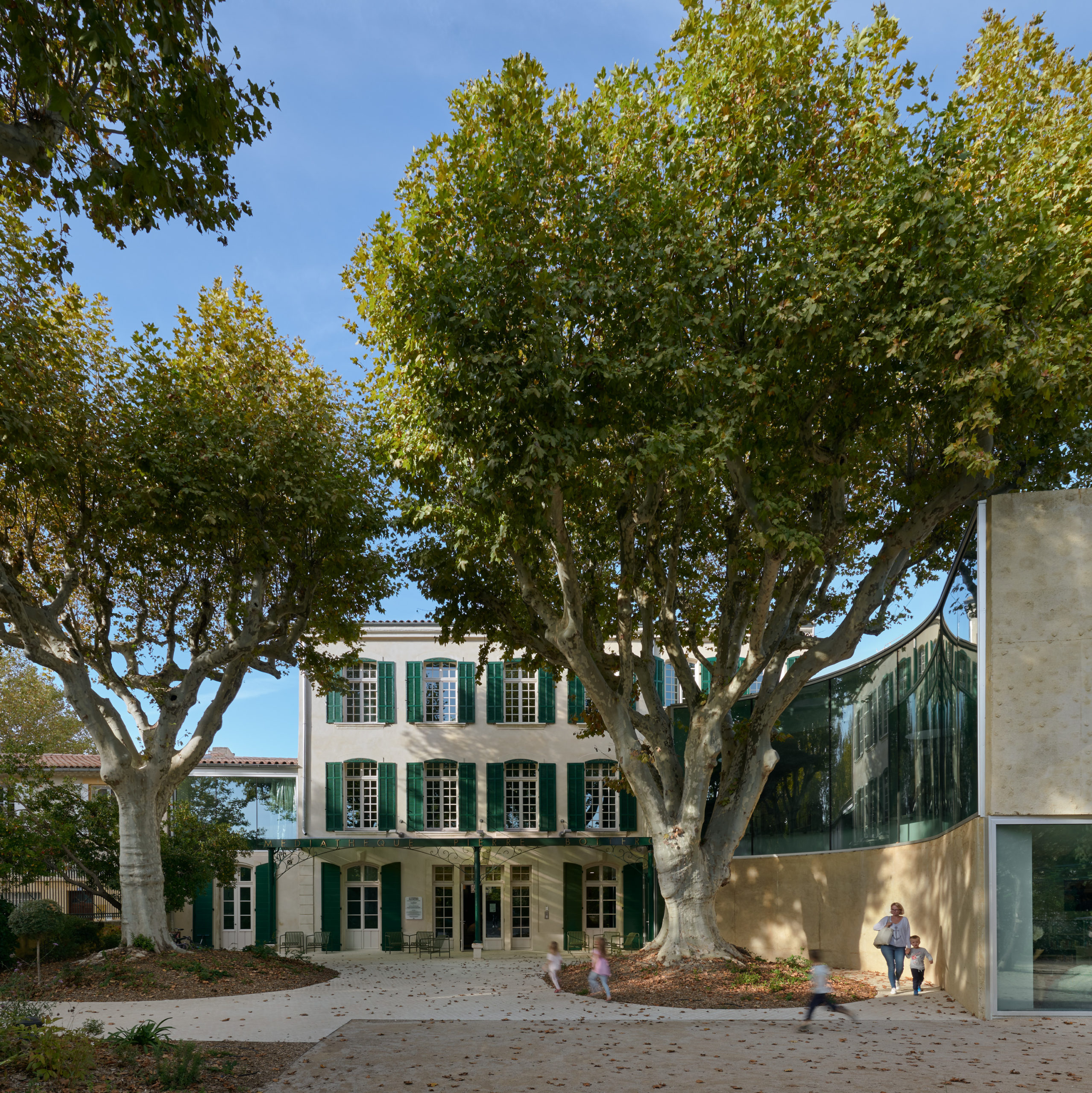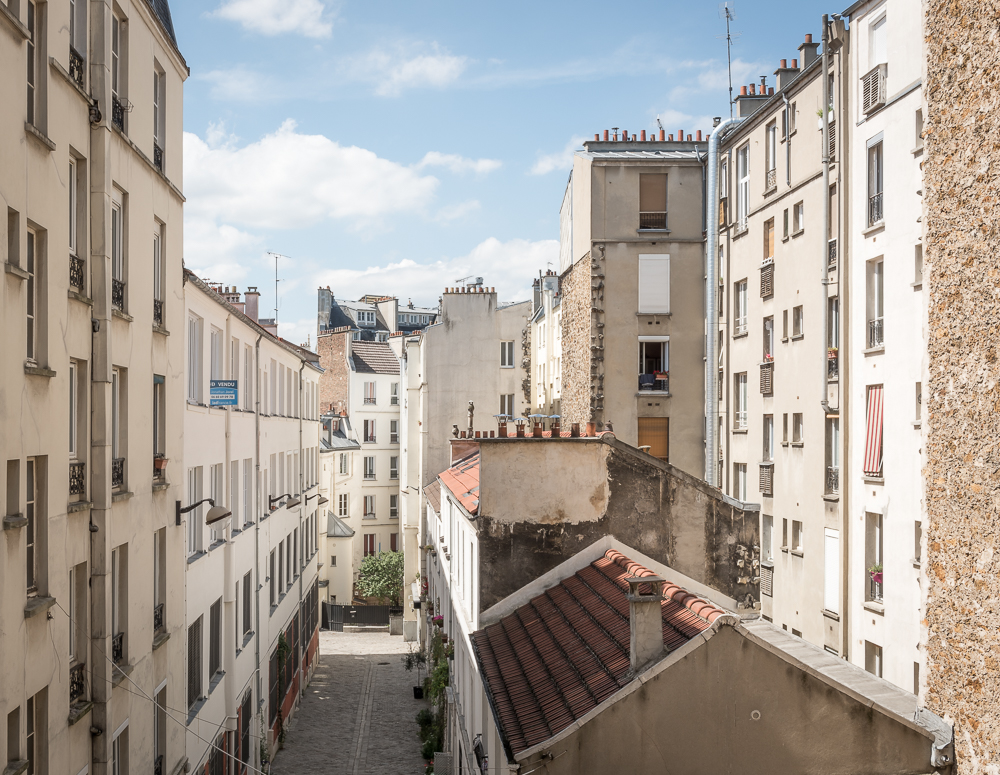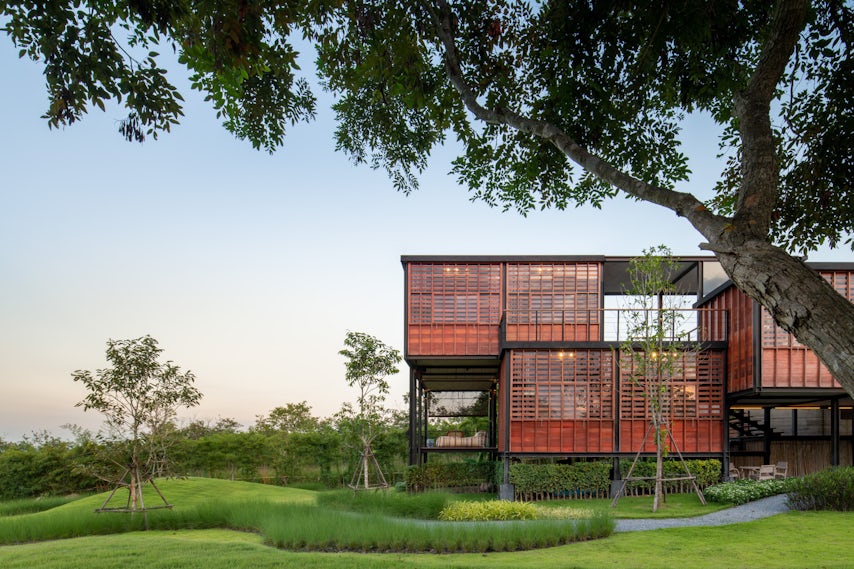The judging process for Architizer's 12th Annual A+Awards is now away. Subscribe to our Awards Newsletter to receive updates about Public Voting, and stay tuned for winners announcements later this spring.
As a Canadian ex-pat currently living in France, I was excited for and whole-heartedly welcomed a change of pace from North American life. Canadians and Americans often idolize Europe and its accompanying lifestyle, and after nine months in France, I can confirm the charm of European living has yet to wear off.
Europe covers a relatively small landmass, especially when comparing it to the rich array of countries that make up the continent. Each country offers its own distinctive culture and way of life, and because of this, it is difficult to categorically define ‘European living.’ Nonetheless, there are certain cultural similarities that can be strongly felt amongst countries (especially those in Western Europe). I will use my time residing in France as a case study to help make sense of North America’s infatuation with the European lifestyle. An infatuation that I continue to feel here in France.
I’ve been residing in Orléans, a small French city located one hour southwest of Paris. The city dates back to antiquity and has a charming mix of half-timbered medieval homes, Haussman-style buildings and Gothic architecture. Those living in the city center typically reside in the town’s older infrastructure, while those in the surrounding suburbs occupy newer, more contemporary buildings.
One of the most apparent reasons why North Americans are so charmed by Europe is its history. European cities are filled with an incredible history that is recognizable through architecture. As a North American, it’s hard not to be taken by such ornate and historic surroundings. When living in Orléans, I can confirm that walking past the striking gothic cathedral and rows of half-timbered homes never got old to my North American eyes.
Despite such apparent beauty, history and charm, there were certain aspects of French living that took some time to get used to. While in France, I said goodbye to the many North-American luxuries I had grown accustomed to: high-end heating, accessible infrastructure, dryers and large living spaces. At first, I missed such luxuries but I quickly discovered just how easy it is to live without them. All it took was a bit of adjusting to eventually realize that many North-American amenities are superfluous. In the winter months, I learned to layer my clothes and in the summer months, I made sure to keep my shutters closed during the day. Quickly enough, giving up modern amenities was easy to do when, in return, you get to live in a historic city.
Even as we enter the hot summer months, I do not long for North American amenities. One of the most pronounced differences between Europe and North America in the summer is the absence of air conditioning. Most old European apartments do not come equipped with air conditioning. European homes are often built with brick and stone, unlike North American homes, which are built with wood. Building with stone and brick provides much better insulation and thus a more temperature-regulated living space. Therefore in Europe, it is possible to keep a dwelling cool in the summer. Moreover, the use of exterior window shutters is common in Europe and helps keep out the heat during the days and ventilate the home at night. Perhaps it is less convenient not having air conditioning, but the traditional building infrastructure makes it possible to endure hot summers.

Window Shutters – ‘Pierre Bottero’ media library and park in Pélissanne by Dominique Coulon & Associés, Pélissanne, France, 2020

Stone Buildings – Former Monastery of San Giuliano by CN10 Architetti, Bonate Sotto, Italy, 2016
Moreover, I realized that Orléans’ architecture contributed to my ability to find community in a foreign country. For example, the tight living spaces and communal courtyards helped foster strong connections with my roommates and neighbors. Equally, the abundance of mixed-use buildings furthered this strong sense of community living. In North America, we are often used to separate residential and commercial districts. Whereas in Europe, everything is much more densely organized. We often perceive density as a negative urban characteristic, but in this case, it helped me find my place and personal rhythm in Orléans. Whether it was visiting my local boulangerie or pharmacie, the intertwined nature between commercial stores and residential dwellings fueled a strong connection between all Orléanais people. In addition, the numerous public squares sprawled throughout the city would hold weekly farmer’s markets and social events. These public squares further contributed to my ability to comfortably integrate into the local way of life.

Public Spaces – Leyteire Courtyard by Martin Duplantier Architectes, Bordeaux, France, 2012. Yohan Zerdoun Photography

Dense Architecture – Voltaire by SABO project, Paris, France, 2017
Before I knew it, the very things I at first disliked about France became the very aspects I now appreciate. Today I see claustrophobic close quarters as intimate spaces, narrow sidewalks as endearing and the bike-unfriendly cobblestone roads as a welcomed challenge to my daily commute to work. All in all, what I’ve taken away from my time in France is that European living is often more laidback. It’s at times less convenient and less polished but equally, if not more, enjoyable to North American life. The homes may not be equipped with the standard appliances found in North America, however, one will quickly find great satisfaction and purpose in navigating the quirks of European life.
The judging process for Architizer's 12th Annual A+Awards is now away. Subscribe to our Awards Newsletter to receive updates about Public Voting, and stay tuned for winners announcements later this spring.






 ‘Pierre Bottero’ media library and park in Pélissanne
‘Pierre Bottero’ media library and park in Pélissanne  Former Monastery of San Giuliano
Former Monastery of San Giuliano  Leyteire Courtyard
Leyteire Courtyard  Voltaire
Voltaire 


